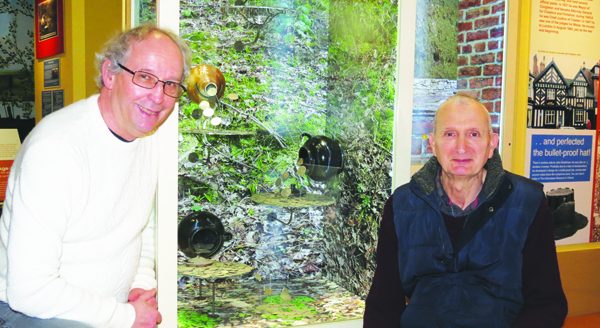Congletonians will be “unpicking stories” behind a hoard of Tudor coins for generations, the team behind the discovery has said.
The Priesty Fields hoard, which was dug up along a wooded bank in 1992, has been recorded as one of the biggest Civil War finds of its kind, with 3,600 coins dating from the reign of Edward VI in the 16th century through to Charles II in the 17th Century.
For Keith Pay, who is celebrating the 30th anniversary of the discovery this month, it has been half a lifetime since he was in the field with his trusty metal detector.
“I was 32 when I found it and I am almost 63 now,” he explained.
“I had a very cheap detector that had been given to me by my father-in-law.
“He was with me when I found the last two pots. At the time, he was washing his Wellington boots in the brook and didn’t believe me; he thought I was winding him up.
“Even though it was a cheap detector, it was such a big object that it picked it up anyway. It’s a fascinating hobby.”
There were four pots of coins in total that were found over a number of days. After the initial 1,000 coins had been discovered a couple of feet beneath the ground, a return to the site eight days later prompted the discovery of hundreds more, just 50 yards from the first find.
The Chronicle reported at the time that it took around 20 minutes of digging to reach the jar containing the coins, which shattered as the detectorists’ tools made contact.
On a third and final visit to the site, Mr Pay found 1,500 more coins 10 feet away.
There was significant media attention when news of the finding broke.
Mr Pay, originally from Sittingbourne in Kent, explained: “It was intense. I was in every national paper. Even in America, a treasure hunting magazine did a story on it.
“Soon after it had been found, my phone went at 5am and it was an offshore radio station asking if I would do an interview. I said, why the hell are you calling me at 5am? They said it was six where they were. I said, that doesn’t sound any better!”
The hoard is on show in an eye-catching display at Congleton Museum, on Market Square, which Mr Pay has encouraged people to visit.
The coins appear to be cascading out of the pots in which they were found, with plenty of information about their significance included in the exhibit.
“I have been to museums in bigger towns and our one beats them,” said Mr Pay. “The curator has done an absolutely fantastic job of displaying the coins. Most people in Congleton probably don’t realise that they are there, but they are of major significance for the area.”
It is most likely that the collection belonged to John Walker, the owner of the field, who was involved in the English Civil War.
Museum curator Ian Doughty said: “There are a number of stories around why they were hidden. Was it part of a hoard of royalist money he was using to pay fighters? Was it something that was hidden during the black death?
“Future generations will still be unpicking stories behind the hoard because there is a lot to find out. It attracts many visitors now that we have got the whole group of coins on display; it has the wow factor.”


